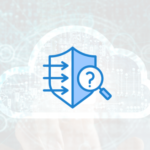In the ever-evolving landscape of cybersecurity, non-profits and trade associations face unique challenges and opportunities. While these organizations often focus on delivering impactful missions and member services, they must also recognize the growing threat of cyber intrusions facilitated by advancements in artificial intelligence (AI).
Understanding the Threat
AI, with its myriad applications, is revolutionizing industries by enhancing efficiency and offering new capabilities. However, this same technology is also being leveraged by cybercriminals to orchestrate sophisticated attacks.
- AI-Powered Phishing Campaigns: AI enables the creation of highly personalized phishing emails that are difficult to distinguish from legitimate communications. These emails can trick recipients into disclosing sensitive information or downloading malicious software.
- The Rise of Deepfakes: Deepfake technology allows cybercriminals to create realistic videos and audio recordings that mimic trusted individuals. This can be used to manipulate or deceive employees and members, leading to unauthorized access to sensitive information.
- Adaptive AI-Driven Malware: AI can be used to develop malware that adapts and evolves, making it harder to detect and remove. This type of malware can infiltrate systems, steal data, and disrupt operations.
Why Non-Profits and Trade Associations Are Targets
Non-profits and trade associations often hold valuable data, including donor information, financial records, and proprietary member data. Additionally, they may have fewer resources dedicated to cybersecurity compared to larger corporations, making them attractive targets for cybercriminals.
Proactive Steps for Protection
- Educate and Train Staff: Regular training on the latest cybersecurity threats and best practices is essential. Employees should be aware of the signs of phishing and other common attacks.
- Implement Robust Security Measures: Utilize multi-factor authentication (MFA), firewalls, and intrusion detection systems. Regularly update software and systems to patch vulnerabilities.
- Monitor and Respond: Establish a protocol for monitoring network activity and responding to potential threats. Consider employing AI-driven security tools to detect and mitigate attacks in real-time.
- Schedule Regular External Vulnerability Scans – Leverage cybersecurity experts like Vortacity Cyber to assess cybersecurity gaps.
- Develop a Cybersecurity Policy: Create a comprehensive cybersecurity policy that outlines procedures for data protection, incident response, and recovery. Ensure that all staff members are familiar with and adhere to this policy.
Collaborating for Greater Security
Non-profits and trade associations can benefit from collaborating with each other and with cybersecurity experts. Sharing information about threats and best practices can enhance collective security and resilience.
Conclusion
AI offers incredible potential, but it also introduces new risks. By staying informed and taking proactive measures, non-profits and trade associations can safeguard their valuable data and continue to focus on their missions. In the battle against cyber intrusions, awareness and preparation are key.
Produced by smart people but assisted by AI & Coffee






